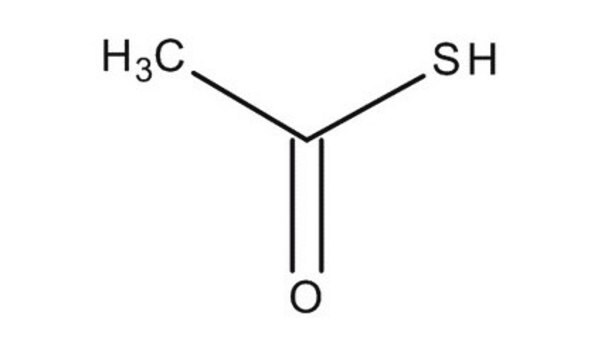About This Item
Recommended Products
grade
ACS reagent
vapor density
1.6 (vs air)
vapor pressure
44.8 mmHg ( 20 °C)
description
dilution test passes test
assay
≥96.0%
autoignition temp.
1004 °F
expl. lim.
57 %
impurities
≤0.4% Acetic acid
evapn. residue
≤0.003%
color
APHA: ≤15
refractive index
n20/D 1.370 (lit.)
bp
100-101 °C (lit.)
mp
8.2-8.4 °C (lit.)
density
1.22 g/mL at 25 °C (lit.)
anion traces
chloride (Cl-): ≤0.001%
sulfate (SO42-): ≤0.003%
sulfite (SO32-): passes test
cation traces
Fe: ≤0.001%
NH4+: ≤0.005%
heavy metals (as Pb): ≤0.001%
SMILES string
OC=O
InChI
1S/CH2O2/c2-1-3/h1H,(H,2,3)
InChI key
BDAGIHXWWSANSR-UHFFFAOYSA-N
Looking for similar products? Visit Product Comparison Guide
application
signalword
Danger
hcodes
Hazard Classifications
Acute Tox. 3 Inhalation - Acute Tox. 4 Oral - Eye Dam. 1 - Flam. Liq. 3 - Skin Corr. 1A
supp_hazards
Storage Class
3 - Flammable liquids
wgk_germany
WGK 1
flash_point_f
121.1 °F - closed cup
flash_point_c
49.5 °C - closed cup
Choose from one of the most recent versions:
Already Own This Product?
Find documentation for the products that you have recently purchased in the Document Library.
Our team of scientists has experience in all areas of research including Life Science, Material Science, Chemical Synthesis, Chromatography, Analytical and many others.
Contact Technical Service










